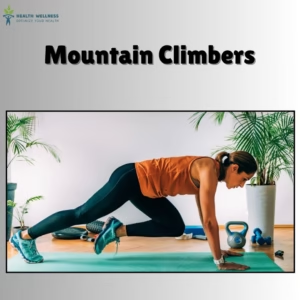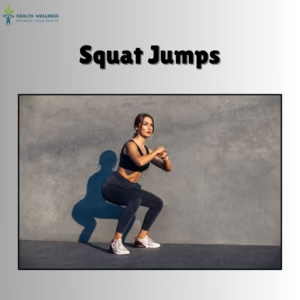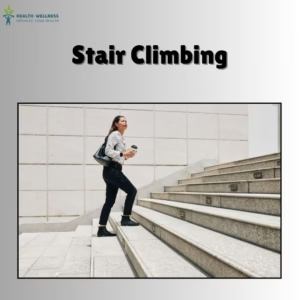The good news? You don’t need hours at the gym. Just 20 minutes of focused cardio workouts can improve your cardiovascular health and metabolism by a lot. The CDC ( Centers for Disease Control and Prevention ) recommends 150 minutes of moderate-intensity cardio per week. We’ve discovered 12 quickest ways to help you meet this goal with your packed schedule.
These cardio exercises deliver results at home or in the gym. Our curated list includes jumping rope that burns 500-800 calories per hour and quick HIIT ( High Intensity Interval Training ) sessions that boost your energy and sharpen your focus. Let’s look at these time-saving workouts that fit perfectly into any busy professional’s day.
Jump Rope Cardio: The Ultimate Time-Saver

A jump rope can give you amazing cardio benefits without taking much time. Studies show that 10 minutes of jumping rope each day works just as well as a 30-minute jog for your heart health. This makes it perfect when you need a quick but powerful workout.
Jump Rope Technique Basics
The right form helps you jump safely and get better results. Stand tall with your spine straight and knees slightly bent. Your grip should be firm but relaxed on the handles, and keep your elbows close to your body. Jump just ½ to 1 inch off the ground and land softly on your feet’s midsoles. Your shoulders should stay relaxed while you keep your head up and chest tall. Let your wrists do the work instead of your arms or shoulders.
20-Minute Jump Rope Workout Plan
Here’s a simple workout that packs a punch:
Basic HIIT Circuit (Repeat 3-5 times)
- Standard jumps: 20 seconds, rest 10 seconds
- Right foot hops: 20 seconds, rest 10 seconds
- Left foot hops: 20 seconds, rest 10 seconds
- High knee jumps: 20 seconds, rest 10 seconds
- Standard jumps: 20 seconds, rest 10 seconds
- Rest one minute between circuits
You can mix jump rope with bodyweight exercises like push-ups, squats, or lunges to work your whole body.
Calorie-Burning Potential
Jump rope burns calories fast. Someone weighing 155 pounds can burn about 200 calories in just 10 minutes of intense jumping. You can burn 10-20 calories every minute, which means a 15-minute session burns around 300 calories. This makes jump rope better at burning calories than running, swimming, and rowing.
Here is to Bulid your Muscles without going to the gym
Jump Rope Variations for All Levels
Beginner Variations:
- Basic jump (both feet together)
- Alternate foot step (changing weight between feet)
- Boxer step (moving weight side to side)
Intermediate Variations:
- High knees (driving knees toward chest)
- Jumping jacks (opening and closing legs)
- Side swings (swinging rope to side between jumps)
Advanced Variations:
- Criss-cross (crossing arms while jumping)
- Double unders (rope passes twice per jump)
- Single-leg jumps (hopping on one foot)
A weighted jump rope can make your workout more intense and help you burn more calories. We found that jump rope works great for everyone from beginners to athletes while giving amazing heart benefits.
HIIT Burpees: Full-Body Cardio in Minutes
Royal Huddleston Burpee Sr., a physiologist, created burpees in the 1930s as a fitness test. The U.S. Army later used them to review recruits. This full-body movement now ranks among the quickest ways to challenge your cardiovascular system while working multiple major muscle groups.
Proper Burpee Form for Maximum Results
The right technique will give you the best results and help prevent injury. Here’s your step-by-step guide to a proper burpee:
- Stand with feet shoulder-width apart.
- Drop into a squat and put your hands flat on the floor inside your feet.
- Jump both feet back to a plank position with your body straight.
- Lower your chest to the floor (or do a full pushup).
- Push yourself up, then jump your feet forward to the squat position.
- Jump up explosively with your arms reaching overhead.
Your control throughout the movement matters most. Fitness director Ebenezer Samuel puts it best: “Never be a jellyfish on the ground when doing burpees”. A tight core and contracted glutes protect your spine and help you move faster through each phase.
Burpee Variations for Different Fitness Levels

Beginner Options:
- Step back burpees: Take one step back at a time instead of jumping to reduce impact.
- No-pushup burpees: Leave out the pushup to make the exercise more available.
- Incline burpees: Use an elevated surface for your hands to make things easier.
Intermediate Variations:
- Burpee box jumps: End each burpee with a box jump.
- Burpee jacks: Add a jumping jack instead of the usual jump.
- Tuck jump burpees: Bring your knees toward your chest during the jump.
Advanced Challenges:
- Weighted burpees: Use dumbbells or a weighted vest.
- Burpee pull-ups: Add a pull-up at the top.
- Single-leg burpees: Stand on one leg for extra balance work.
Incorporating Burpees into Your Cardio Routine
Burpees shine in high-intensity interval training. A simple yet powerful 20-minute workout looks like this:
Do 30 seconds of burpees followed by 15 seconds of rest for 8 rounds. Take a minute break, then repeat another 8 rounds. This keeps your heart rate up while giving you enough recovery time.
Circuit training works great with burpees too. You can add a set number of burpees wherever you’d normally use cardio equipment like a rower or treadmill. Just 5 burpees can break up your workout routine while keeping your heart rate elevated.
Strength athletes should add 3-5 sets of burpees twice a week after their regular workouts. This builds cardio fitness without getting in the way of strength goals.
Mountain Climbers: Core and Cardio Combined

Mountain climbers combine cardio and strength in one fluid movement, unlike many other exercises that focus on just one aspect. Your shoulders, triceps, chest, core, quads, hamstrings, and calves all get involved during each repetition. These exercises can improve your cardiovascular function by a lot when you keep taking them as part of high-intensity interval training.
Mountain Climber Form Guide
The right form will give a maximum benefit and prevent injury. Here are the steps you need:
- Begin in a high plank position with hands shoulder-width apart, directly under your shoulders
- Spread your fingers and press firmly into the floor to stabilize your upper body
- Maintain a straight line from head to heels with a neutral spine
- Drive one knee toward your chest, then quickly return to starting position
- Immediately bring the opposite knee forward while returning the first leg back
- Continue alternating legs with control and a tight core
Your hips should not lift too high (creating a triangle shape) or drop too low (causing excessive lower back arch). Keep your hips lined up with your shoulders throughout the movement.
Why Mountain Climbers Are Perfect for Busy Professionals
Mountain climbers give busy people several advantages. You need no equipment, making them available anywhere—from a hotel room to your office. They deliver great results by combining cardiovascular benefits with core strengthening in one exercise.
Fitness experts say mountain climbers work best in short, intense bursts, making them perfect for time-constrained workouts. You can do them in a 6-minute routine of 20 seconds work followed by 10 seconds rest. This quick but powerful approach fits well into a busy professional’s day.
Advanced Mountain Climber Variations
After mastering the basics, try these challenging variations:
Cross-Body Mountain Climbers: Bring your knee toward the opposite elbow rather than straight forward, which intensifies oblique engagement.
Spider Mountain Climbers: Drive your knee toward your elbow on the same side, creating a semicircle movement that targets obliques and back muscles.
Decline Mountain Climbers: Place your feet on an elevated surface to increase intensity for your shoulders and upper body.
Tempo Mountain Climbers: Switch between quick and slow, controlled movements to increase time under tension and boost muscle development.
Beginners can place hands on an elevated surface to reduce weight on their wrists and upper body while building strength gradually.
Bodyweight Squat Jumps: Lower Body Power

Squat jumps are among the best power-building cardio exercises you can do without equipment. Studies show that training with squat jumps for 8 weeks can boost your jumping power by 16.7% and peak power by 8.2%. This leads to an impressive 25% gain in vertical jump height.
Squat Jump Technique
The right form will give you maximum benefits and help avoid injuries:
- Place your feet shoulder-width apart with toes slightly pointed outward
- Sink into a squat position as if you’re sitting back in a chair
- Let your weight settle through your feet, slightly favoring the heels
- Drive upward by pushing through your heels
- Launch yourself up as your arms swing overhead in one smooth motion
- Touch down gently on the balls of your feet, then shift weight to heels
- Move smoothly into the next squat position as you absorb the landing
Your success depends on controlling the movement throughout. Power should come from your hips rather than your knees.
Protecting Your Joints During Squat Jumps
Your joints face high impact during squat jumps, especially knees and ankles. Here’s how to stay safe:
Land with bent knees and flow right into your next squat. Keep your knees aligned – they shouldn’t cave inward since this disrupts impact absorption and might cause pain. Start the jump by pushing from your heels but land on the balls of your feet.
Beginners and people with joint issues should look at alternatives like intermediate jumps or drop squats. Intermediate jumps let you push up and jump with feet together, while drop squats involve jumping feet outward as you lower into position.
Progressive Intensity Options
Your workout can evolve as you build strength and confidence:
Beginner Level:
- Basic squat jumps with shallow depth
- Step-back version that replaces jumps with steps
- Box squat jumps using a 6-inch platform
Intermediate Level:
- Deep squat jumps
- Tuck jumps that bring knees toward chest
- Jump-and-turns with 90° rotation mid-air
Advanced Variations:
- Weighted squat jumps with dumbbells or ankle weights
- Single-leg jump squats
- Full 360° rotation jumps
Squat jumps serve as an excellent standalone cardio exercise. You can also add them to circuit training or use them to finish leg workouts.
High Knees: Simple Yet Effective Cardio

High knees show you don’t need complex movements or equipment for effective cardio—just good form and steady effort. Your body works as a whole during high knees, which helps burn lots of calories, especially when you work harder and longer. You can burn 55-60 calories in just five minutes of high-intensity high knees, depending on how hard you push yourself.
High Knees Proper Form
The right technique will give a maximum workout while keeping you safe:
- Stand with feet hip-width apart, weight concentrated in the balls of your feet
- Drive one knee toward your chest, above waist level
- Lower your foot quickly while lifting the opposite knee
- Keep your chest upright without leaning forward
- Keep arms at 90-degree angles, pumping them naturally with each step
Your feet should land softly on the balls, never on heels. Many people lean too far forward, which limits their movement and disengages their core. You should pull your legs up using your abs instead of pushing from your lower back.
High Knees Workout Variations
Your fitness level determines which variations work best:
Beginner Options:
- Marching High Knees: Slower, controlled movements focusing on form
- High Knee March: Lift knee high while bringing heel toward glutes
Intermediate and Advanced Options:
- Running High Knees: Quick alternation emphasizing high knees and cadence
- A-Skips: Skip off the stance leg as legs alternate, maintaining rhythm
- Cross-Body High Knees: Bring knee toward opposite elbow
Tracking Intensity with High Knees
Results come from tracking your tempo and duration. Start with 30-second intervals and 30-second rest periods. Your fitness will improve as you increase work intervals and reduce rest periods.
HIIT training works well with 30 seconds of high knees followed by 15 seconds of rest, repeated for 2-3 minutes. You can also do 12 repetitions on each leg to see improvements in strength and mobility within 2-4 weeks.
Benefits for Busy Professionals
High knees work great for busy professionals because they:
- Need no equipment
- Work anywhere—even in a small office space
- Build multiple muscle groups at once, including quads, calves, glutes, hip flexors, and core
- Make your running form better and more efficient, which helps with other cardio activities
High knees combine cardio benefits with strength training in one simple exercise. A few sets throughout your day will keep your joints mobile and your lower body strong.
Jumping Jacks: Classic Cardio at Home

Jumping jacks have stood the test of time as a cardio favorite, and with good reason too. This classic exercise works your whole body and burns maximum calories while activating major muscle groups. Your body gets both muscular and cardiovascular benefits, which makes it perfect for busy professionals who need quick workouts.
Proper Jumping Jack Form
The right technique helps you get the most out of jumping jacks while staying safe:
- Stand with your feet together and arms by your sides
- Jump and spread your legs wider than shoulder-width
- Lift your arms outward and up above your head at the same time
- Land gently on the balls of your feet, then jump right back to where you started
Your form works best when you wear shoes that support and cushion your joints. Keep your back straight and abs tight to protect your lower back. Make sure your knees stay lined up throughout the movement. Let your thighs and calves do the work while keeping your shoulders relaxed to avoid neck strain.
Jumping Jack Variations
Beginner Options:
- Step-Out Jacks: Step your feet out instead of jumping to reduce impact
- Half Jacks: Only raise your arms to shoulder height if mobility is limited
Intermediate Variations:
- Seal Jacks: Clap your hands in front of your body rather than overhead
- Squat Jacks: Keep a slight squat as you move
Advanced Challenges:
- Plank Jacks: Hold a high plank and jump your feet out and in
- Star Jumps: Jump high to make an “X” shape in the air
- Cross Jacks: Cross your feet while crossing arms at chest level
Incorporating Jumping Jacks into Circuit Training
Jumping jacks fit perfectly into circuit training routines. A simple circuit might include 30 seconds of jumping jacks followed by bodyweight exercises like squats, push-ups, alternating lunges, and crunches. Keep rest minimal between moves. Take a two-minute break, then do three complete rounds.
Jumping jacks offer amazing flexibility for quick workouts. A 30-day challenge works well – just increase your reps gradually and rest every fifth day. Mix jumping jacks with exercises like burpees to create the perfect foundation for high-energy HIIT sessions.
Stair Climbing: Everyday Cardio Opportunity

Stairs are the most available cardio equipment hiding in plain sight. Your home, workplace, and public spaces offer an exceptional cardiovascular workout without special equipment or gym memberships.
Finding Stairs in Your Daily Environment
Opportunities exist everywhere in your regular routine. Office buildings, apartment complexes, public parks, and stadiums make excellent stair climbing venues. Most people seek out elevators and escalators, but choosing stairs turns everyday activities into fitness opportunities. Many fitness experts call stair climbing “indoor hiking” that delivers trail hiking’s benefits with greater convenience and consistency.
20-Minute Stair Workout Plan
Any staircase becomes a complete cardio gym with this workout:
- Warm-up (2 minutes): Climb stairs at a slow pace
- Main Circuit – Repeat 3 rounds:
- Climb at a quick pace (1 minute)
- Hip extensions while climbing (1 minute): Step up and kick your back leg behind you
- Side climbing left (1 minute): Turn to your left side, climb sideways
- Side climbing right (1 minute): Turn to your right side, climb sideways
- Active recovery (2 minutes): Return to slow pace
Your fitness improvements will let you add more rounds or try variations like skipping steps or alternating high knees.
Benefits of Stair Climbing for Cardiovascular Health
Stair climbing’s cardiovascular benefits are remarkable. Research shows climbing more than five flights daily (about 50 steps) reduces cardiovascular disease risk by 20%, including strokes, heart attacks, and blood clots. Regular climbers have a 24% lower risk of death from any cause and their cardiovascular disease mortality drops by 39%.
Stair climbing works effectively and burns three times more calories than flat-ground walking in the same time period. Busy professionals get maximum results from minimal time investment.
Dancing: Fun Cardio That Doesn’t Feel Like Exercise

Dance cardio stands out from other workouts because it’s pure fun that makes you forget you’re actually exercising. Music gets more and thus encourages more movement. Add great instructors to the mix, and you’ll stick with dance workouts much longer than you would on a treadmill.
No-Equipment Dance Cardio
Dance cardio really shines because you don’t need any special gear – just your body and some energy. Dance workouts naturally build strength in your legs, hips, and core. You’ll also get better coordination as you sync your moves with the music. Popular styles you can try include:
- Latin-inspired dance (Zumba, Salsa)
- Hip-hop and street dance
- Ballet-based fitness
- Bollywood fusion
The calorie burn is pretty amazing too. Take Bombay Jam for example – people can burn up to 800 calories in just one hour of class. This means even quick sessions can give you great results.
Following Online Dance Workouts
The digital world is packed with dance workout options:
YouTube channels like EMKFIT, The Fitness Marshall, and GrowWithJo have dance workouts that run 15-30 minutes. These instructors always remind you that perfect moves aren’t the goal – you just need to keep moving.
You’ll also find specialized apps and platforms with well-laid-out programs. Just Dance Now transforms your smartphone into a controller that connects to your screen through WiFi. This lets you dance along to over 200 hit songs. You might also like Pocket Salsa if you’re into Latin dance, or bigger platforms like AKT On Demand, Obé Fitness, and Les Mills+.
Creating Your Own Dance Routine
You can make your workout more tailored by putting together a 20-30 minute playlist with songs that have similar tempos. Pick a few simple moves from each of these groups:
- Movements taking you down (squats, body rolls)
- Vertical movements (jumps, overhead arm raises)
- Side-to-side movements (side steps, salsa steps)
- Turning movements (simple turns, 360-degree jumps)
Remember, sticking with it matters more than doing complex moves. Dance at least four days each week and add two days of strength training to get the best results. Dance cardio works so well because anyone can do it at any fitness level, and the best part? Nobody can see you when you’re dancing at home.
Speed Skaters: Lateral Movement Cardio

Speed skaters, which get their name from Olympic speed skaters’ side-to-side motion, are a great way to get cardio benefits through lateral movements that regular workouts often skip. This exercise builds strength in your outer thigh muscles, hips, and core. You’ll also see improvements in your balance and coordination – these are vital elements many professionals miss in their daily routines.
Speed Skater Technique Guide
Stand with your feet hip-width apart in a slight quarter squat position. Put your weight on your right leg, then:
- Jump sideways to your left by pushing off your right foot
- Your right leg should cross behind as you land gently on your left foot
- Cross your right arm in front while extending your left arm behind
- Take a quick pause to steady yourself before moving the other way
Land with control and keep your weight on your midfoot – avoid shifting to the sides or heels. Your hips, knees, and ankles should line up with a neutral spine to stay injury-free.
Why Lateral Movements Matter
We move forward most of the time, but side-to-side movements play a key role in joint health and functional fitness. These exercises target different muscle fibers, especially in the hips and core. Your underused muscles like adductors and abductors get stronger, and you’ll gain better stability in the frontal plane.
Regular lateral exercises help reduce injury risks and optimize your movement patterns. This makes speed skaters valuable for professionals who spend long hours facing forward.
Incorporating Speed Skaters into HIIT
Speed skaters fit perfectly into high-intensity interval workouts. Try this quick 4-minute Tabata routine:
- Do speed skaters for 20 seconds
- Rest for 10 seconds
- Do this 8 times
Olympic speed skaters originally used this 20/10 interval method. Studies show it boosted anaerobic capacity by 28% and improved VO2max by 14% in just six weeks. You can also do a gentler version by stepping side to side without jumping while keeping the arm movements.
Plank Jacks: Core-Focused Cardio
Plank jacks blend core strengthening with cardio training and turn a static plank into a dynamic workout powerhouse. This exercise works multiple muscle groups at once – your core, shoulders, arms, and legs. You can get an effective workout even when time is short.
Plank Jack Form Guide
Here’s how to do plank jacks correctly:
- Begin in a high plank position with hands directly beneath shoulders, arms extended
- Your body should make a straight line from head to heels
- Draw your navel toward your spine to work your core
- Jump both feet outward (like a jumping jack motion)
- Jump feet back together quickly
- Keep breathing steady as you repeat
The right form needs a straight back – don’t let your hips drop or rise up. Your upper body stays still while your legs do the jumping.
Core Engagement Tips
The right core activation makes every movement count more. Here’s how to work your core:
- Pull your belly toward your spine to activate your transverse abdominis
- Keep glutes and quads tight to protect your pelvis
- Breathe deeply and steadily, exhale when you jump
- Your abs should stay tight to keep that straight line from shoulders to ankles
Studies show plank exercises work core muscles twice as well as regular crunches. This makes proper form vital to results.
Plank Jack Variations for Different Fitness Levels
Beginner Options:
- Plank side taps: Step each foot out sideways instead of jumping
- Elevated plank jacks: Put hands on a raised surface to make it easier
Intermediate Variations:
- Standard plank jacks
- Forearm plank jacks: Drop to forearms to challenge your core more
Advanced Challenges:
- Single-leg plank jacks: Lift one leg while you jump
- Plank jack burpees: Add a push-up and jump
Combining with Other Exercises
Plank jacks work best in HIIT workouts. Try 20 seconds of work with 10 seconds of rest. They fit well among other moves in circuit combinations:
- Core circuit: Mix plank jacks with mountain climbers and bicycle crunches
- Full-body HIIT: Combine plank jacks, burpees, squat jumps, and high knees
You can burn more calories by adding plank jacks between strength exercises to keep your heart rate up. They serve as great cardio breaks in any workout routine.
Shadow Boxing: Stress-Relieving Cardio
Shadow boxing provides a physical workout and mental release that makes it a perfect cardio option to reduce stress. You can burn over 400 calories per hour with this equipment-free exercise while developing foot speed, hand coordination, and technique.
Basic Boxing Stance and Movements
A proper stance is vital before throwing your first punch. Your feet should be wider than shoulder-width apart, with your dominant foot back and knees slightly bent. Keep your back foot’s heel lifted, with hands held high in loose relaxed fists. Place your lead hand about a foot in front of your jaw and rear hand against your head. Your chin should be tucked down slightly with elbows pointing downward, not outward.
Master these fundamental punches:
- Jab: Extend your lead arm while turning your fist to angle knuckles down
- Cross: Rotate forward on your back foot while extending your rear arm
- Hook: Rotate feet and torso while bringing your lead arm out in a semicircular strike
- Uppercut: Power upward from a slight squat position
20-Minute Shadow Boxing Routine
This structured session works well:
- Warm-up (2 minutes): Light jogging, jumping jacks
- Round 1-3 (6 minutes): One-minute rounds of continuous basic punches with 30-second rest periods
- Round 4-6 (6 minutes): Add defensive movements—slips, rolls, and ducks between punch combinations
- Round 7-8 (4 minutes): Freestyle combinations that focus on speed and power
- Cool-down (2 minutes): Light movement and stretching
Combining Punches for Maximum Cardio Effect
Combination punches boost your workout by involving multiple muscle groups at once. Each punch works like a pulley system and activates your hips, core, and shoulders together. These combos are particularly effective:
- Jab-cross-hook: Establishes rhythm while working both sides
- Jab-cross-slip-cross: Adds defensive movement between strikes
- Four-punch combo with pivot: Adds footwork to involve your whole body
Shadow boxing’s physical exertion helps channel built-up tension or frustration into your workout. This releases endorphins that boost mood and create a sense of well-being.
Bear Crawls: Primal Cardio Movement
The bear crawl connects us to our primitive movement patterns and delivers a powerful cardio workout. Your body uses almost every muscle at once during this four-limbed exercise. Busy professionals will find it the quickest way to achieve maximum results in minimal time.
Bear Crawl Technique
The right form will give you safe and effective results:
- Start in a quadruped position with hands under shoulders and knees under hips
- Raise your knees 1-2 inches off the ground while keeping your back flat
- Step your left hand and right foot forward together
- Move your right hand and left foot next in a contralateral pattern
- Your core should stay tight throughout the movement
A neutral spine position works best with knees floating just above the floor. Keep your hips level—avoid raising them too high (A-frame shape) or dropping them too low (arched back). This stance naturally activates your core, shoulders, and legs while your body coordinates all movements.
Space Requirements and Modifications
Bear crawls adapt well to different environments. You’ll want 10-30 yards of open space, and outdoor areas work perfectly. Small spaces work too—just crawl in various directions (forward, backward, sideways, or circular) to make the most of limited room.
Beginners should start with bear plank holds—staying still in position—or add shoulder taps while holding the pose. Advanced athletes can boost intensity by:
- Wearing a weighted vest
- Moving uphill or on stairs
- Adding push-ups between crawls
- Changing speeds (sprint or super-slow)
- Doing backward bear crawls
Why Bear Crawls Challenge Your Cardiovascular System
Bear crawls raise your heart rate faster by using multiple muscles together, even though they’re low-impact. Short, intense sessions target your anaerobic system, while longer distances build aerobic capacity. You can burn about 100 calories with 10 minutes of steady crawling, making it surprisingly effective for calorie burning.
Your nervous system works harder to coordinate this complex movement pattern, which boosts body awareness and proprioception. This combination creates both physical and mental challenges during the exercise.
Comparison Table
| Exercise | Main Benefits | Calories Burned | Difficulty Variations | Equipment Needed | Target Muscle Groups |
|---|---|---|---|---|---|
| Bear Crawls | Full-body coordination, cardiovascular conditioning | 100 cal/10 min | Beginner: Bear plank holds Advanced: Weighted vest, uphill crawls |
None | Core, shoulders, legs |
| Burpees | Full-body strength, cardiovascular endurance | Not mentioned | Beginner: Step-back burpees Intermediate: Burpee box jumps Advanced: Weighted burpees |
None | Multiple major muscle groups |
| Dancing | Enjoyable cardio, improved coordination | Up to 800 cal/hour | Various styles: Latin, Hip-hop, Ballet-based, Bollywood | None | Legs, hips, core |
| High Knees | Cardiovascular fitness, lower body strength | 55-60 cal/5 min | Beginner: Marching high knees Advanced: Running high knees |
None | Quads, calves, glutes, hip flexors, core |
| Jump Rope | Cardiovascular improvement, agility | 200 cal/10 min | Beginner: Simple jumps Intermediate: High knees Advanced: Double unders |
Jump rope | Full body |
| Jumping Jacks | Full-body activation, cardiovascular strength | Not mentioned | Beginner: Step-out jacks Intermediate: Seal jacks Advanced: Plank jacks |
None | Full body |
| Mountain Climbers | Core strength, cardiovascular endurance | Not mentioned | Beginner: Modified on elevated surface Advanced: Spider climbers, cross-body |
None | Shoulders, triceps, chest, core, legs |
| Plank Jacks | Core strengthening, cardio conditioning | Not mentioned | Beginner: Plank side taps Intermediate: Standard plank jacks Advanced: Single-leg variations |
None | Core, shoulders, arms, legs |
| Shadow Boxing | Stress relief, coordination | 400 cal/hour | Simple: Single punches Advanced: Complex combinations |
None | Full body |
| Speed Skaters | Lateral strength, balance, coordination | Not mentioned | Beginner: Step-out version Advanced: Jumping variations |
None | Outer thighs, hips, core |
| Squat Jumps | Power building, lower body strength | Not mentioned | Beginner: Reduced depth jumps Intermediate: Full-depth jumps Advanced: Weighted jumps |
None | Lower body, core |
| Stair Climbing | Cardiovascular health, leg strength | 3x more than walking | Beginner: Simple climbing Advanced: Skip steps, side climbing |
Stairs | Legs, glutes, core |
Conclusion
These 12 cardio exercises show you don’t need hours at the gym or expensive equipment to work out. Each exercise gives you the most important cardiovascular benefits and targets multiple muscle groups. They work perfectly when you’re short on time.
My research shows these exercises help you burn 200-800 calories in each session based on how hard and long you work. You can pick 2-3 exercises from this list and do a 20-minute workout to meet CDC’s recommended 150 minutes of weekly cardio activity.
This collection of exercises gives you plenty of choices. You might enjoy the rhythm of jump rope, stress-relief from shadow boxing, or the full-body challenge of burpees. You’ll find options that fit your fitness level and the space you have.
Note that being consistent matters more than being perfect. Begin with exercises you can handle and add more challenging versions as you get fitter. These quick workouts help maintain your heart health and merge naturally with your busy professional life.
FAQs
Q1. What’s the most effective cardio exercise for busy professionals? Burpees are one of the most effective cardio exercises for busy professionals. They engage multiple muscle groups simultaneously and can provide a high-intensity workout in just a few minutes. A set of 10 burpees takes about 1-2 minutes and can significantly elevate your heart rate.
Q2. How can I incorporate cardio into my routine if I only have 5-7 minutes? You can incorporate effective cardio in 5-7 minutes by doing high-intensity exercises like burpees, jumping jacks, or mountain climbers. For example, try 3 sets of 10 burpees, which takes about 4 minutes, and fill the remaining time with jumping jacks or high knees for a complete mini cardio session.
Q3. Are jumping jacks a good cardio option for beginners? Yes, jumping jacks are an excellent cardio option for beginners. They’re easy to learn, require no equipment, and can be modified to suit different fitness levels. Jumping jacks engage your entire body, providing both cardiovascular benefits and light muscle toning.
Q4. Can I get an effective cardio workout without equipment? Absolutely. Many effective cardio exercises require no equipment, such as burpees, mountain climbers, high knees, and jumping jacks. These bodyweight exercises can provide intense cardiovascular workouts and can be done anywhere, making them perfect for busy schedules.
Q5. How often should I do cardio exercises for optimal health benefits? For optimal health benefits, aim to include cardio exercises in your routine 3-5 times per week. Even short, high-intensity sessions of 5-7 minutes can be beneficial if done consistently. Remember, it’s better to do short, regular cardio sessions than occasional long ones.

